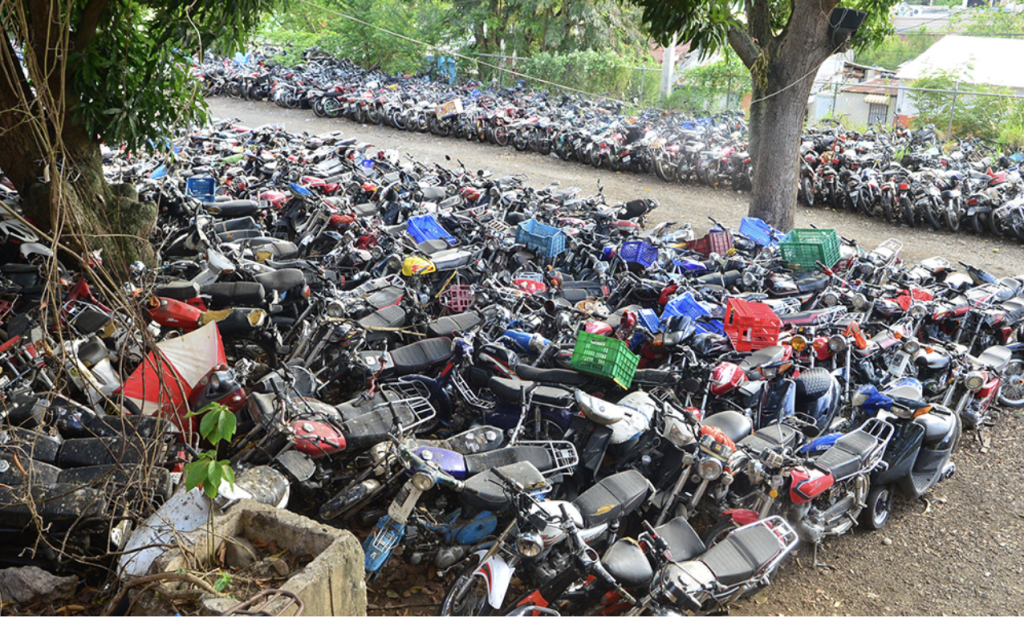
The patio of the San Luis Fortress in Santiago de los Caballeros, the country’s second largest city, is used as a dump ground for the hundreds of impounded motorcycles and vehicles.
El Caribe reports that the red tape of the justice system makes it difficult for the owners to get back their bikes. As a result, in around 1,200 meters of land there are over 800 motorcycles, and more than 100 cars, trucks and vans. El Caribe reports that around 300 of the bikes have been retained by the Public Prosecutor’s Office because these have were involved in traffic accidents. The other around 500 motorcycles are there due to a lack of lights, participation in clandestine races, or for using license plates that do not correspond to them, or for lack of documentation.
This is the same story that affects the larger “Canódromo” National Transit and Ground Transport Agency (Digesett) facility that is located in Santo Domingo.
Colonel Juan Bautista Jimenez Reynoso, regional director of the Digesett in Santiago, La Vega and Espaillat provinces, says since he was sent to the position four months ago he has worked to accelerate the process of returning the motorcycles that are not in the custody of the Public Prosecutor’s Office. He said as a result of these efforts, 1,500 motorcycles have been returned.
“Here the majority of cars or motorcycles that are still here are those that are in the custody of the public prosecutor’s office,” said the Digesett official. He said others are in a totally deteriorated condition, due to the impact of the accidents, and have been abandoned by their owners.
Representatives of the Council for the Strategic Development of Santiago or the Association for the Incorporated Development (APEDI) have been demanding for years that the agencies such as the Digesett, and the Drug Control Agency (DNCD) and Tourism Police (Politur) that have offices at the San Luis Fort be relocated.
Saul Abreu, executive director of the Association for the Incorporated Development, calls for the opening of a museum, exhibition hall, and social meeting point at the lovely central location, instead of a retention center for vehicles or where government service entities are housed. Abreu, recalls that, because of its historical reference, Fort San Luis has great potential.
“Ideally, the service entities could be relocated to a more suitable place,” says Abreu. He believes that a different location would enable offering better service to the population.
Reynaldo Peguero, executive director of the Council for the Strategic Development of Santiago, considers necessary and important to refurbish the fortress so that it can be used for cultural activities. A resolution of the National Congress already positively addressed the enhancement of the Fortaleza San Luis (FSL).
The Council proposes the issuing of a presidential decree that definitively establishes a public-private governance body for this cultural heritage. The new entity would be presided by the City Council of Santiago and the Ministry of Culture. The El Caribe report recalls that almost two decades ago this fortress housed what is today the Central Cibao Command of the National Police and the public jail of Santiago that was later relocated.
Read more in Spanish:
El Caribe
20 April 2022

